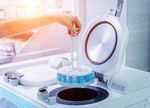
Understanding Home Water Filtration System
A home water filtration system is designed to remove or reduce contaminants from household water to make it safe and pleasant for daily use. These systems can use filters, membranes, ultraviolet light, or a combination of technologies to treat impurities such as sediment, heavy metals, bacteria, or dissolved salts.
Such systems exist because the water supplied to homes whether from municipal pipelines, borewells, or storage tanks may not always meet ideal drinking standards. Factors such as ageing infrastructure, industrial pollution, and naturally occurring minerals often contribute to reduced water quality. In many regions, issues like hardness, fluoride, and microbial contamination have made household filtration systems an essential part of modern living.

Importance
Access to clean and safe drinking water is vital for health, hygiene, and overall well-being. Contaminated water can lead to waterborne diseases, chemical exposure, and long-term health concerns. A home water filtration system helps eliminate these risks by providing a reliable barrier between contaminants and the water you drink every day.
This topic matters today because:
-
Urbanisation and population growth have placed pressure on water infrastructure.
-
Industrial waste and agricultural runoff contribute to changing water quality.
-
Climate change affects groundwater levels and contamination rates.
-
Increasing public awareness of water safety has led households to seek preventive solutions.
Key benefits of home filtration systems include:
-
Protection against harmful bacteria, viruses, and heavy metals.
-
Improved taste, odour, and clarity of drinking water.
-
Healthier hydration and cooking practices.
-
Confidence in the purity of everyday water use.
Recent Updates (2024–2025)
Recent years have seen major advances in the water filtration industry and household awareness.
-
The Indian home water purifier market has shown consistent double-digit growth since 2024, reflecting strong demand across urban and semi-urban households.
-
Smart and connected filtration technologies are gaining traction, including sensors that monitor filter life and real-time TDS levels.
-
Eco-friendly systems designed to minimise wastewater discharge are becoming popular, especially in areas with limited groundwater.
-
The Water Purification System (Regulation of Use) Rules, introduced in 2023, are now in effect, ensuring that systems comply with proper waste-management and certification requirements.
-
There is an increasing focus on matching filtration technology with actual water quality. For example, reverse osmosis (RO) systems are recommended only when TDS levels exceed 500 ppm, while activated carbon and UV filtration are more suitable for low-TDS water.
These trends indicate a shift from basic purification toward sustainable, data-driven, and regulation-compliant home water treatment solutions.
Laws or Policies
In India, home water filtration systems are guided by several key policies and standards:
-
Drinking Water Quality Standards: The Bureau of Indian Standards (BIS) defines permissible limits for chemical, physical, and microbiological parameters in drinking water under IS 10500:2012.
-
Water Purification System (Regulation of Use) Rules, 2023: These rules govern domestic and commercial systems, ensuring proper labelling, certification, and disposal of waste parts.
-
Environmental Protection and Water Pollution Control Acts: These provide the larger framework to manage pollution and water quality.
-
BIS Standard for Water Purifiers (IS 16240:2015): This standard ensures domestic systems meet minimum purification performance and safety criteria.
-
National Water Policy and Jal Jeevan Mission: Government initiatives that focus on universal access to safe drinking water through sustainable management and technology adoption.
Such policies collectively ensure that water filtration systems meet performance, safety, and environmental guidelines while protecting consumers from unsafe or non-compliant products.
Tools and Resources
For households seeking reliable water filtration guidance, several practical resources and tools are available:
-
Water Testing Kits: Quick testing kits help check Total Dissolved Solids (TDS), hardness, pH, and microbial contamination in local water.
-
TDS and Contaminant Calculators: Online calculators help determine what type of filtration system is most suitable for your water quality.
-
Quality Standards Checklists: Compare local water test results with national drinking water standards to understand potential risks.
-
Filter Life Monitors: Smart apps and devices now allow tracking filter usage and notifying users when maintenance or replacement is due.
-
Consumer Guidance Platforms: Websites and organizations regularly publish insights on water quality, purification technologies, and environmental impact.
-
Government Dashboards: Initiatives such as rural and urban water quality monitoring portals provide verified data on regional water conditions.
These tools empower users to make informed, evidence-based decisions about their household water purification needs.Frequently Asked Questions
Q 1. How can I tell if my home needs a water filtration system?
Test your tap or borewell water for TDS, heavy metals, and microbial content. If results show excess minerals, chlorine, or bacterial contamination, a filtration system is advisable.
Q 2. What are the main types of home filtration technologies?
-
Activated Carbon Filters: Remove chlorine, odour, and organic compounds.
-
Ultrafiltration (UF) and Nanofiltration (NF): Capture smaller particles and pathogens.
-
Ultraviolet (UV) Purification: Neutralises bacteria and viruses using light.
-
Reverse Osmosis (RO): Removes dissolved salts, heavy metals, and hardness from water with high TDS levels.
Q 3. Are there regulations that filtration systems must follow?
Yes. Systems sold or used domestically must comply with BIS standards and carry proper labels indicating certification, purification technology, and maintenance guidelines.
Q 4. What common mistakes do homeowners make with filtration systems?
-
Using RO systems where TDS is already low.
-
Ignoring filter replacement schedules.
-
Failing to test water periodically after installation.
-
Overlooking eco-friendly options that reduce wastewater.
Q 5. How long do filters and membranes typically last?
Filter life depends on water quality and usage. Sediment or carbon filters may last 6–12 months, while RO and UF membranes can last up to 3–5 years. UV lamps should typically be replaced every year for optimal performance.
Conclusion
Understanding home water filtration systems is crucial for maintaining household health and sustainability. The right system depends on water source, local contamination patterns, and personal preferences regarding taste and safety.
With government policies ensuring performance standards and a growing range of advanced technologies, it has become easier to ensure consistent water quality at home. Regular water testing, informed selection of technology, and timely maintenance help households achieve long-term protection and sustainability.
In today’s environment where water safety is both a health and lifestyle priority an informed approach to home filtration ensures that every drop you drink supports wellness, confidence, and peace of mind.





